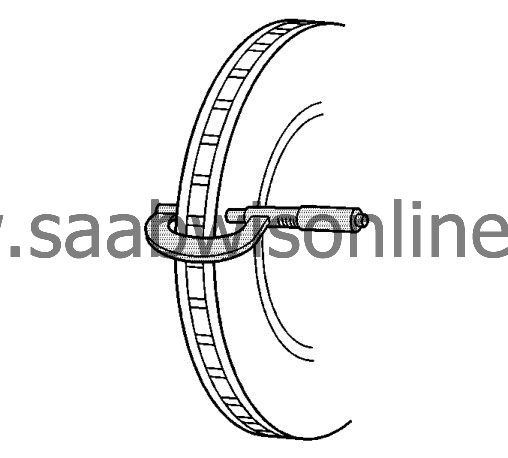Brake Rotor Thickness Measurement
|
|
Brake Rotor Thickness Measurement
|
Refer to
Brake Dust Warning
.
|
2.
|
Clean the friction surfaces of the brake rotor with denatured alcohol, or an equivalent approved brake cleaner.
|
|
3.
|
Using a micrometer calibrated in thousandths-of-a-millimeter, or ten-thousandths-of-an-inch, measure and record the lowest thickness of the brake rotor at 4 or more points, equally spaced around the rotor.
Ensure that the measurements are only taken within the friction surfaces and that the micrometer is positioned the same distance from the outside edge of the rotor, about 13 mm (1/2 in), for each measurement.
|
|
4.
|
Compare the lowest thickness measurement recorded to the following specifications:
Specification - Front
|
•
|
Brake rotor minimum allowable thickness after refinishing: 28 mm (1.102 in)
|
|
•
|
Brake rotor discard thickness: 27 mm (1.07 in)
|
Specification - Rear
|
•
|
Brake rotor minimum allowable thickness after refinishing:
16 inch rotor: 11 mm (0.433 in)
17 inch rotor: 22 mm (0.866 in)
|
|
•
|
Brake rotor discard thickness:
16 inch rotor: 10.0 mm (0.395 in)
17 inch rotor: 21.0 mm (0.827 in)
|
|
|
1.
|
If the lowest thickness measurement of the brake rotor is above the minimum allowable thickness after refinishing specification, the rotor may be able to be refinished, depending upon surface and wear conditions which may be present.
|
|
2.
|
If the lowest thickness measurement of the brake rotor is at or below the minimum allowable thickness after refinishing specification, the rotor may not be refinished.
|



